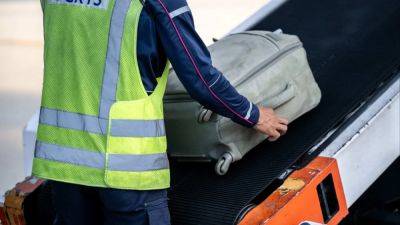Japan plans automated cargo transport system to relieve shortage of drivers and cut emissions
TOKYO (AP) — Japan is planning to build an automated cargo transport corridor between Tokyo and Osaka, dubbed a “conveyor belt road” by the government, to make up for a shortage of truck drivers.
The amount of funding for the project is not yet set. But it’s seen as one key way to help the country cope with soaring deliveries.
A computer graphics video made by the government shows big, wheeled boxes moving along a three-lane corridor, also called an “auto flow road,” in the middle of a big highway. A trial system is due to start test runs in 2027 or early 2028, aiming for full operations by the mid-2030s.
“We need to be innovative with the way we approach roads,” said Yuri Endo, a senior deputy director overseeing the effort at the Ministry of Land, Infrastructure, Transport and Tourism.
Apart from making up for a shrinking labor force and the need to reduce workloads for drivers, the system also will help cut carbon emissions, she said.
“The key concept of the auto flow-road is to create dedicated spaces within the road network for logistics, utilizing a 24-hour automated and unmanned transportation system,” Endo said.
The plan may sound like a solution that would only work in relatively low-crime, densely populated societies like Japan, not sprawling nations like the U.S. But similar ideas are being considered in Switzerland and Great Britain. The plan in Switzerland involves an underground pathway, while the one being planned in London will be a fully automated system running on low-cost linear motors.
In Japan, loading will be automated, using forklifts, and coordinated with airports, railways and ports.
The boxes measure 180 centimeters in height, or nearly six feet, and are 110 centimeters, or 3.6 feet, by 110







